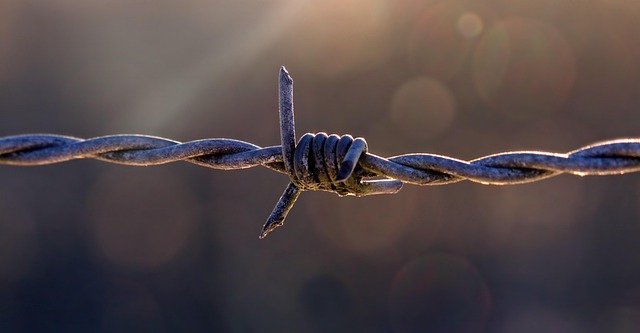Large properties present unique fencing challenges, demanding durable, cost-effective solutions that cater to extensive lengths and diverse landscapes. This article guides homeowners and property managers through the process of selecting suitable fencing materials, offering insights into the latest cost-saving options without compromising quality. From initial planning to ongoing maintenance, we provide essential tips to ensure your fence not only enhances security but also stands the test of time while respecting your budget.
- Understanding Fencing Needs for Large Properties
- Exploring Cost-Effective Fencing Materials
- Installation Tips for Longevity and Savings
- Maintenance Strategies to Prolong Fence Lifespan
Understanding Fencing Needs for Large Properties
Large properties present unique challenges when it comes to fencing. The extensive perimeter often requires durable, long-lasting materials that can withstand harsh weather conditions and potential wildlife. Additionally, the aesthetic considerations are heightened; the fence should complement the landscape and overall property design.
Understanding these needs is key to selecting an effective fencing solution. Property owners should consider factors such as privacy, security, visual appeal, and functionality. A well-designed fence can enhance curb appeal, provide a sense of seclusion, and even increase property value. By evaluating these aspects, homeowners can make informed decisions when choosing among various cost-effective fencing options suitable for their large properties.
Exploring Cost-Effective Fencing Materials
When considering fencing for large properties, cost-effectiveness should be at the forefront of your mind. One way to achieve this is by exploring a range of affordable materials that still offer durability and quality. Wooden fences, while traditional, can be an excellent option due to their relative low cost and ease of installation. Treated timber options in particular are resistant to rot and decay, ensuring longevity even in challenging weather conditions.
Alternatively, vinyl fencing has gained popularity for its low maintenance requirements and long-lasting durability. This material is highly versatile, available in various styles to suit different aesthetic preferences, while also being a cost-efficient choice. Additionally, metal fences, often made from recycled materials, provide robust security without breaking the bank. These options offer both visual appeal and practical benefits, ensuring you get value for money while enhancing the safety and privacy of your large property.
Installation Tips for Longevity and Savings
When installing fencing for large properties, focusing on longevity and cost-effectiveness starts with proper preparation. Clear the site thoroughly, removing any debris or vegetation that could interfere with the fence’s structural integrity. Survey the area to identify potential issues like uneven terrain or obstructions, planning your route accordingly to ensure a sturdy and straight fence line. Using high-quality materials suitable for outdoor conditions is essential; opt for durable fencing posts and robust wire or panel options.
For long-lasting savings, consider employing a mix of permanent and temporary solutions. Strategically place more substantial fencing in areas requiring maximum security, using posts set deep into the ground for added stability. For broader stretches, lighter-weight materials or even natural barriers like hedges can reduce costs while still providing adequate privacy. Regular maintenance, including inspecting for damage and securing loose panels or wires, will extend the life of your fence, ensuring it remains functional and aesthetically pleasing over time.
Maintenance Strategies to Prolong Fence Lifespan
Regular maintenance is key to extending the life of any fence, especially on large properties where the investment can be significant. A simple cleaning routine involving hosing down and brushing away dirt and debris can prevent buildup and rust, which are common causes of damage. Inspecting the fence for any signs of wear or weakness should be a weekly task, allowing for quick repairs before issues escalate.
Fencing solutions that are left unattended can become habitats for pests and attract unwanted wildlife, causing further damage. Treating the wood with suitable preservatives annually can protect against rot and insect infestations, while painting or re-varnishing will reinforce the barrier’s integrity. These proactive measures ensure the fence remains a secure and visually appealing boundary for years to come.
